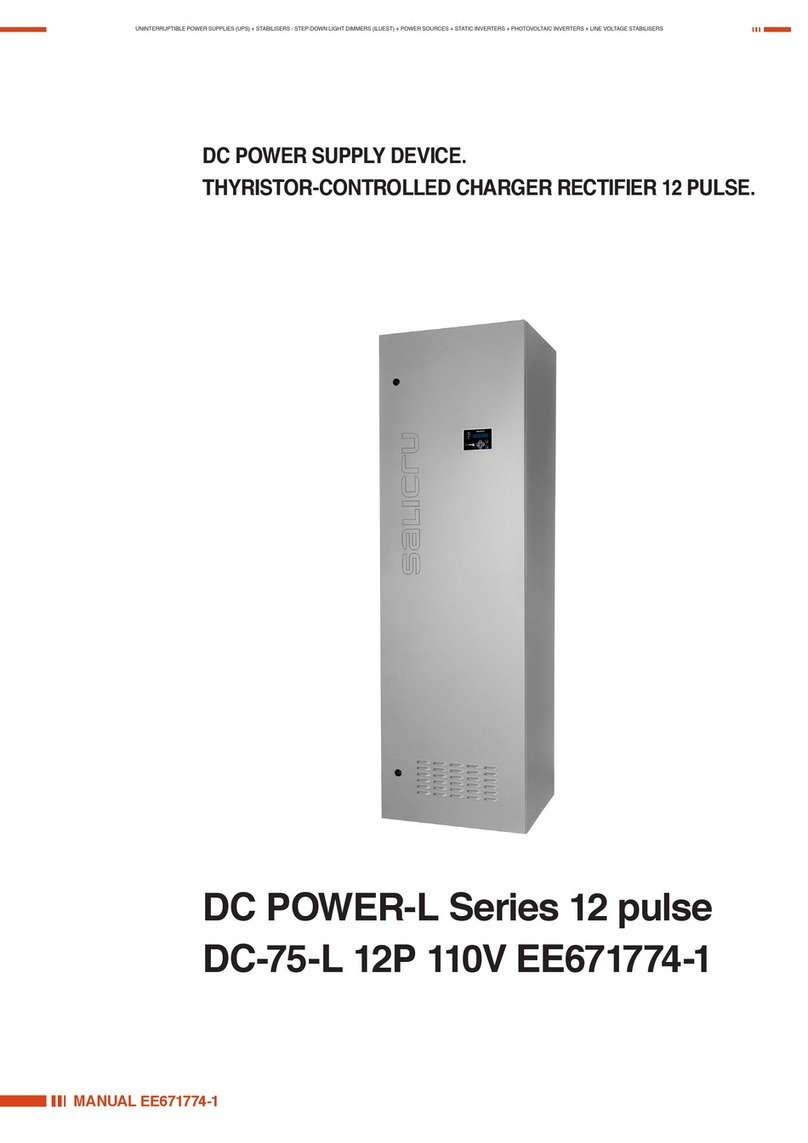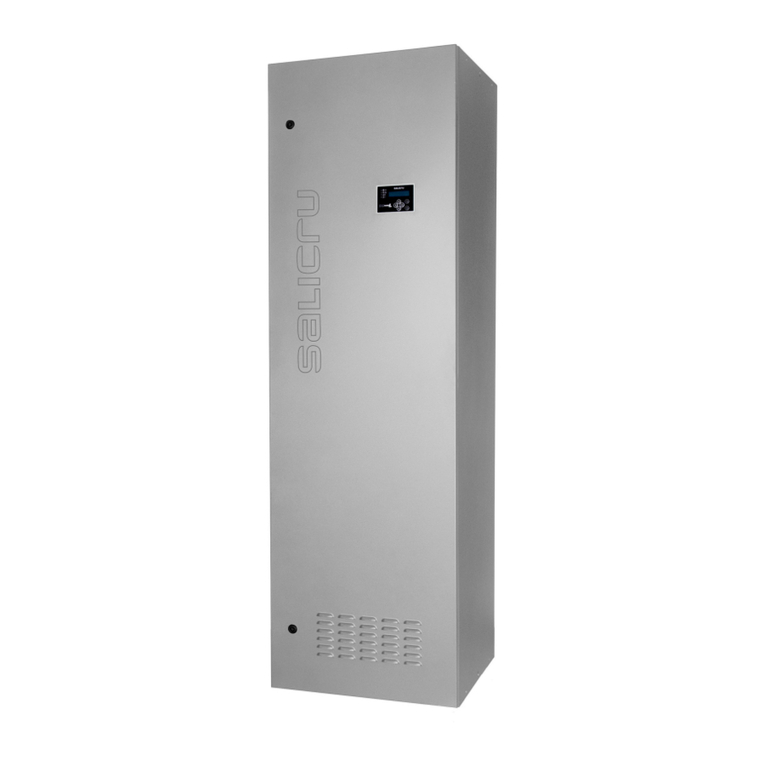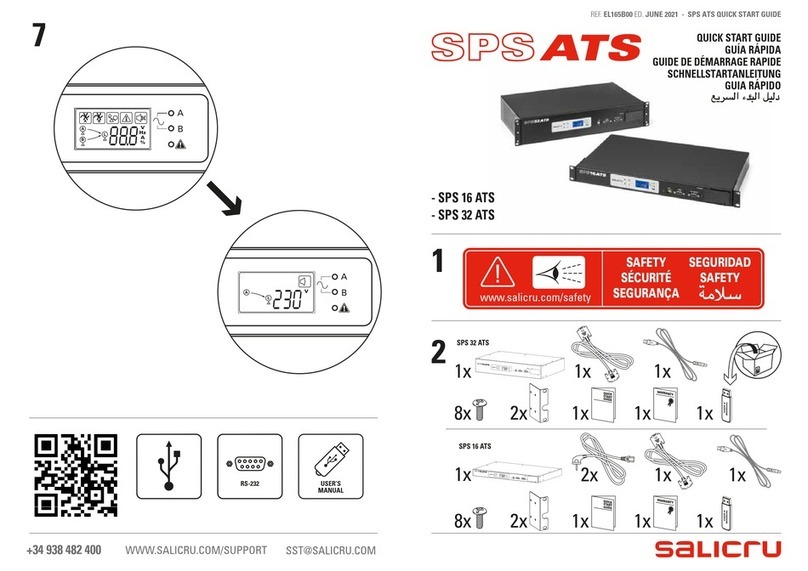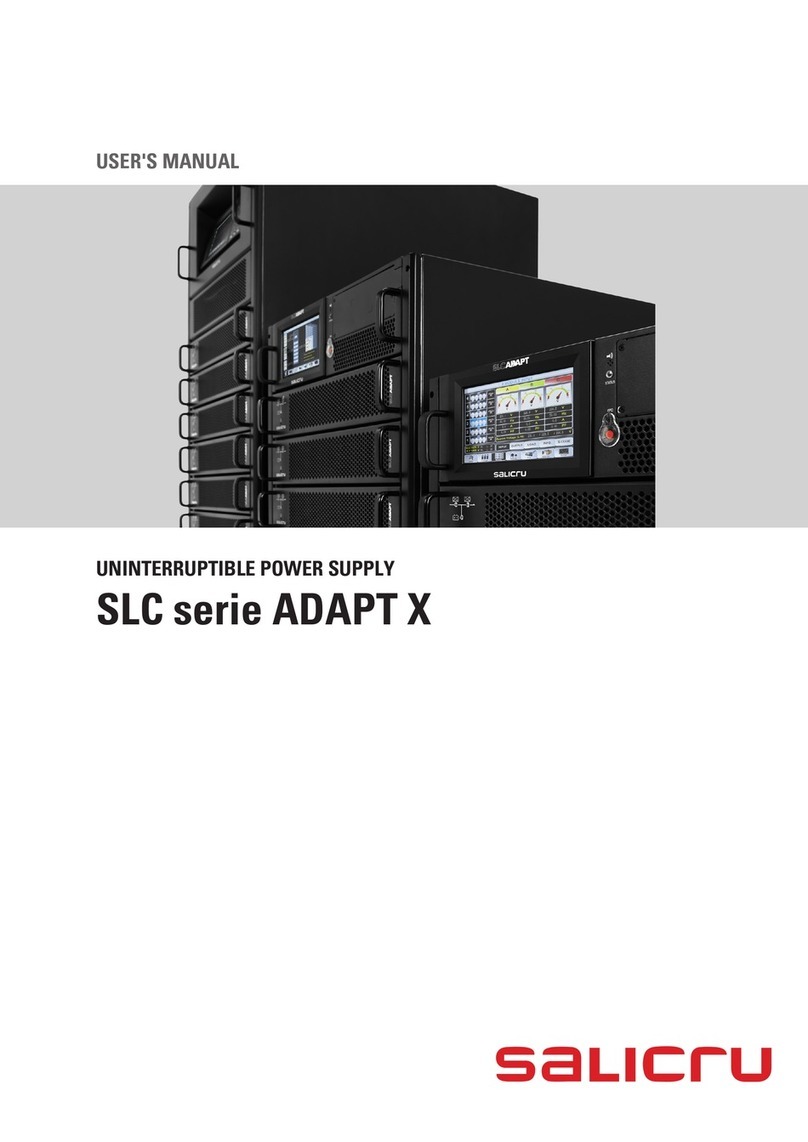
- 8 -
•73/23/EEC of Low Voltage Safety
•89/336/EEC of Electromagnetic Compatibility (EMC)
In accordance with the specifications of the harmonised standards. Reference standards:
•EN 60950-1: IT equiments. Safety. Part 1: General requirements.
•EN 61000-6-3: Electromagnetic compatibility. Generic standard of emission. Residential, commercial and light industry envi-
ronment.
•EN 61000-6-2: Electromagnetic compatibility. Generic standard of immunity. Industrial environment.
When a ILUEST is used as a part of a complex installation or system, the Generic or Product Standards of it must be applied to
this installation or specific system.
It is possible that when adding elements, or when being under the requiriments of a specific standard, the system must undergo
to corrections to assure the conformity of the Eurpean Directives and to the current national legislation. The Planner and/or
fitter are/is the responsible of the standards compliance, by addding the needed corrective elements to the installation.
Besides, the interference phenomenon due the harmonics currents at the input exists, which although it is not regulated by any
standard, it is necessary to correct some installations.
Depending on the installation conditions of the ILUEST the corrections of the Electromagnetic Compatibility corrections must
be applied or not. For any version and regarding to the Safety (standard EN 60950-1), must be kept in mind the aspects of the
product stated in the INSTALLATION section.
2.3.- Safety and first aids.
• Together with the equipment and this «Installation and operating manual» is supplied the relative information to «Safety
instructions» (See document EK266*08). Before installing or starting up the equipment, check that both documents are
available; othwerwise request them. It is mandatory the compliance of the «Safety Instructions», being legally responsible
the user for their observance. Once read, keep them for future consultations that can arise.
2.4.- Environment.
This product has been designed to respect the environment and has been manufactured in accordance with the standard
ISO 14001.
ILUEST recycling at the end of its useful life:
SALICRU commits to use the services of authorised societies and according to the regulations in order to treat the
recovered product at the end of its useful life (contact your distributor).
Packing:
To recycle the packing, follow the legal regulations in force.
Batteries:
The batteries mean a serious danger for the health and environment. The disposal of them must be done in accordance
with the standards in force.



































